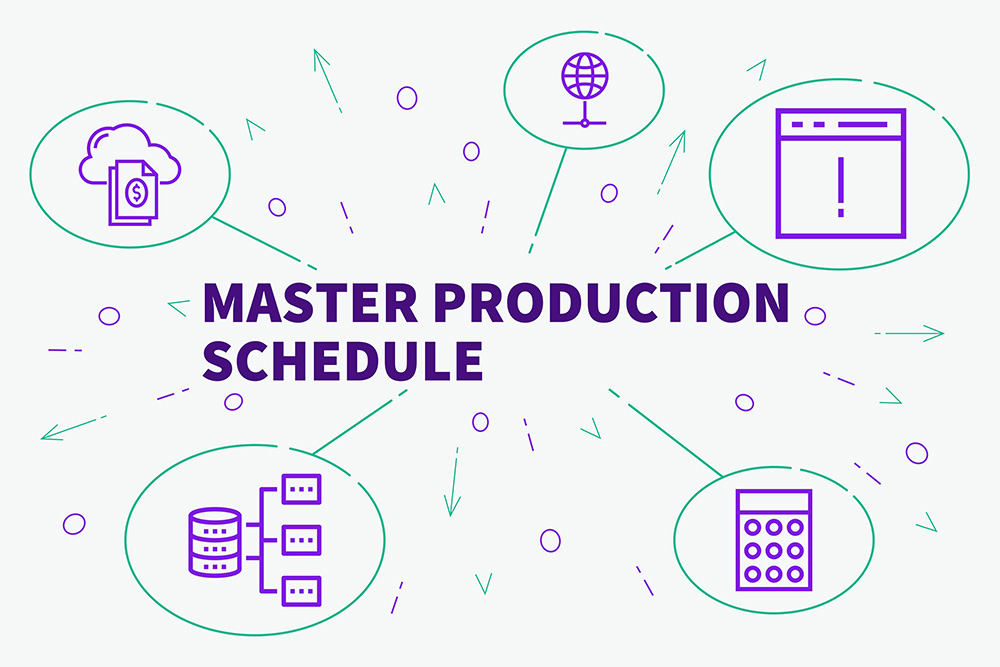A certain ancient Chinese strategist that many business leaders love to quote once said: “Strategy without tactics is the slowest route to victory. Tactics without strategy is the noise before defeat.” While he made that quote for military leaders to take to heart, business leaders have since sworn by it to achieve success in an increasingly demanding world.
Every facet of business requires both strategy and tactics, but nowhere is it more important than the production process. Ongoing labor shortages, inefficient inventory management, consumer trend changes—without strategy, tactics, or both, these issues and more can lead to a critical cascade. It starts with production delays and ends with customers losing faith in the business.
The primary goal of any production line is to meet market demand for its goods. Its strategy is in its overarching production plan, while its tactics are in its schedule. Here’s a close look into how to master both the art of planning and scheduling.
Increasing uncertainty
Planning for the unexpected is a practice that every business owner should be doing. However, the global disruption caused by the recent pandemic proves that current systems are ill-equipped to handle uncertainties.
That’s according to Vishal Gaur, a professor of manufacturing management at the Cornell SC Johnson College of Business. He said that sales and operational planning (S&OP), the system used by most companies, works when uncertainties are minimal. In other words, the system can accommodate a production line’s needs for the short term.
That said, S&OP can’t effectively account for disruptions beyond the business’s control. During the first year of the global pandemic, massive shipping delays forced companies to leave production planning to guesswork. That worsened the situation with mounting waste costs and frequent shortfalls in meeting targets.
Gaur urged companies to change the old S&OP system into an automated system that accounts for historical production data. He added that basic spreadsheet software can be programmed to run complex statistical calculations.
If programming existing tools isn’t an option, signing up for a paid production planning system is just as viable. A fully built production management software takes out the need for complex coding and, more importantly, guesswork. Some also generate forecasts depending on data like material requirements and existing manufacturing orders (MOs).

Priority sequencing
MOs don’t arrive in a neat line according to variables like duration and number of units. When an order arrives, the business must plan its place on the production line without losing track of orders already being processed. Proper job sequencing enables a production line to optimize its schedule without excessive disruption.
Manufacturing processes adopt various rules when sequencing orders, such as:
- Queue
This is the most basic method of sequencing, arranging MOs based on when they entered the production line. Examples include first in, first out (FIFO) and last in, first out (LIFO), which are also applicable in inventory management.
- Processing time
The processing time refers to the time required to complete an order. Manufacturing lines can prioritize jobs with either the longest or shortest processing time. When the processing time isn’t immediately known in some MOs, businesses can sequence them according to imminent or estimated processing time.
- Deadline
This approach prioritizes jobs based on the job’s earliest deadline. It also includes calculating an order’s slack time or how much time a job can be postponed without affecting completion time. In this case, the production will focus on jobs with the least slack or laxity time.
- Critical ratio
This approach measures how much on schedule an order is. The critical ratio is determined by dividing the difference between the due and current dates by the process time remaining. A critical ratio greater than 1.0 means the job is ahead of schedule, while less than 1.0 means the job is behind schedule and must take priority.
The fact that various sequencing rules exist implies no one-size-fits-all rule exists. Despite two manufacturers creating the same products, they can differ in the availability and accessibility of resources and their target audience, among other aspects.
Inevitable variability
Mastering the art of creating an optimal production schedule is a challenging feat. No matter how much businesses optimize their production process, there remains the issue of variability. The more of it in the production line, the more erratic production schedules and the longer the lead times can get.
For example, battery manufacturers are under pressure to scale production up in anticipation of the government’s goal of carbon-free energy by 2035. Industry leaders estimate that demand for batteries in the next decade will grow by up to 30 times the current demand. However, they’ve expressed concerns about gaps in domestic capability like supply security and labor shortages.
Lithium-ion batteries, which various industries are expected to use in large volumes, have plenty of parts made from different materials. Each of these materials has its own supply chain prone to problems beyond the business’s control. Not to mention that the people creating them can fall ill or be laid off, reducing the number of available labor.
As a result, unless in an ideal world, production schedules can never achieve 100% accuracy and efficiency. That doesn’t mean scheduling is futile. A schedule doesn’t have to be flawless as long as it helps fulfill market demand.
Conclusion
Production planning and scheduling are a company’s strategy and tactics, respectively, and have grown in significance in this post-pandemic economy. Uncertainty and variability will be among the major hindrances to seamless manufacturing, which companies should avoid taking lightly.





